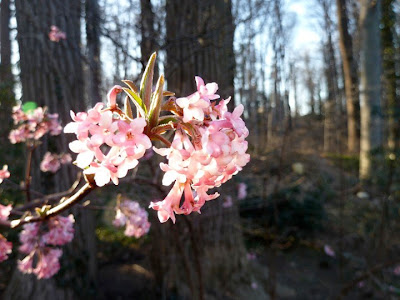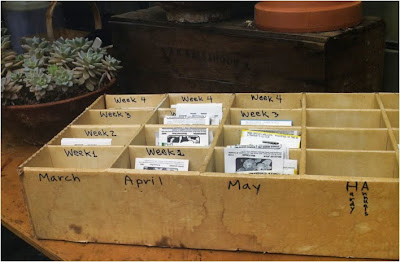I wouldn’t say they thrive on winter neglect and the bone dry potting soil that surounds their roots on the backstairs windowsills, but they live to see another summer. They’re also the only plants that thrive in the summer under my (non)watering scheme. I’ve been tempted to ONLY plant geraniums in previous years -- partly inspired by the incredible window boxes and containers of geraniums we saw in the Alsace Lorraine a couple of years ago. Now there is an even better reason to fill the garden with common geraniums.
Scientists have known since the 1920s that geranium flowers appear to both attract Japanese beetles and paralyze them -- the beetles become so intoxicated by the petals they pass out for 12 to 18 hours which in the wild can be a lethal binge.
Recently UK entomologists Daniel Potter and David Held have studied this phenomenon further to discover what causes this reaction. Japanese beetles are the scourge of home gardeners and retailers -- eating over 300 types of plants and 79 plant families. Almost all of the states east of the Mississippi River except Florida suffer incredible financial damage from greedy beetles, and the U.S. Department of Agriculture is keen to prevent the beetles spreading to the western US where they could devastate California vineyards and crops. An effective and earth-friendly way of exterminating Japanese beetles would be a goldmine and the geranium’s knockout punch seems to have great potential.
"We found that when Japanese beetles fed upon the petals of geranium, generally in less than an hour the bugs enter a kind of narcotic state," says Potter. "They curl up on their back and pull their legs close to their underside. They'll twitch if you disturb them, but they're clearly in dreamland."Funded by the USDA, Potter and Held have found that the bugs seem unable to resist geranium temptation -- when beetles were given a choice between nutritious linden plants and mind-blowing geraniums they overwhelmingly went for the geraniums and ended up on their backs. Nor did they learn from their mistake, every time they recovered from their geranium-trip they ignored the healthy choices and chomped down on almost 10 times the previous amount of geranium petals before becoming intoxicated again. Interestingly, geraniums grown in full sunlight packed more of a gastronomic punch for the beetles.
Potter's team also reared pairs of beetles in boxes with soil so that they could lay their eggs the beetles. One group received the healthy linden leaves, one group received the geranium petals, and one group received an equal amount of both.
"As one would expect, the group that got the linden leaves lived long and happy lives and laid a large number of eggs," says Potter. "Both groups with access to geranium spent the better part of this two-week experiment on their backs in a narcotic state, had a much higher mortality rate, and laid very few eggs."With the help of plant chemists at Cornell, UK researchers are testing various geranium chemicals on the beetle-favorite Virginia creeper, and they've been able to duplicate the geranium's narcotic effects. Potter says that by this coming summer they'll have identified the exact extract which should be invaluable in creating effective Japanese controls.
"One of my goals is to understand the insect better," says Potter. "I think if you understand the biology of a pest insect, it opens up new avenues for management that are environmentally more responsible."The Japanese beetle's behavior makes it an interesting insect to study, Potter says.
"I really like the Japanese beetle. It's my bread and butter insect. It's a great bug, sort of The Terminator of the insect world."Maybe this summer I actually will create an Alsace inspired geranium display and sit back with a glass of Riesling to watch the beetle show.

















































